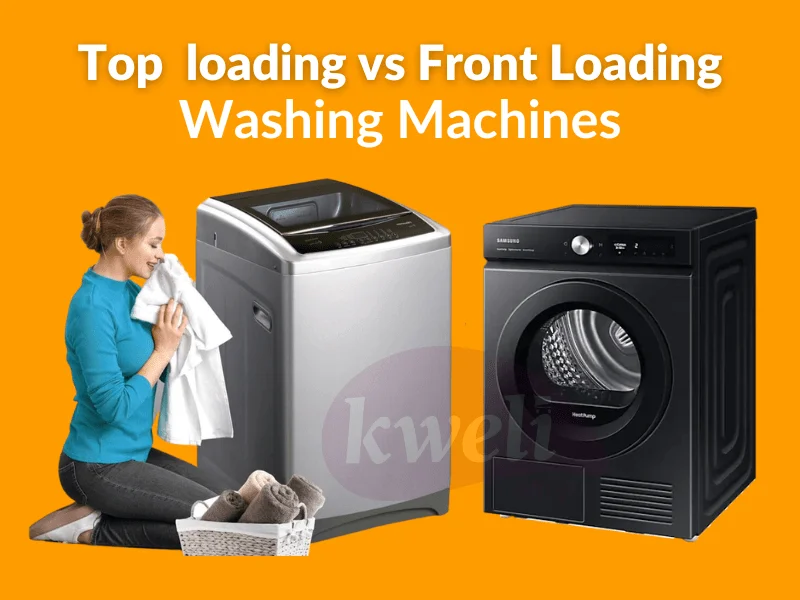With the unreliability of maids, highly demanding jobs and the heavy load on families especially when babies come into the picture, washing machines have become an essential appliance in modern households, revolutionising the way we handle laundry. However, with the wide variety of washing machine types available in the market, choosing the right one can be a daunting task. In this article, we will explore the differences, pros, and cons of two of the most common washing machine types.
Top-loading washing machines feature a vertical drum design, where clothes are loaded and unloaded from the top.
Pros:
- Affordability: Top-loading machines are generally more budget-friendly compared to front-loading models.
- Best for small spaces: Top-loading washing machines are easier to fit in small spaces as they do not have a large door at the front of the washer.
- Easy to Use: The top-loading design allows for easy access, making loading and unloading laundry a breeze.
- Flexibility: You can add clothes mid-cycle, which is convenient for forgotten items.
- Shorter Cycle Time: Top-loading washing machines typically wash clothes faster than front-loading washing machines.
- Taller individuals find top-loading washing machines because they do not have to bend or kneel while loading and offloading clothes.
Cons:
- Water and Energy Consumption: Top-loading machines typically use more water and energy compared to front-loading models, making them less energy-efficient.
- Less Gentle on Clothes: The agitator present in some top-loading machines can be harsh on delicate fabrics.
- Limited Capacity: The agitator or impeller in most top-loaders tends to take up extra space and reduce the washing capacity.
- Shorter lifespan: Top-loading washing machines typically have a shorter lifespan than front loaders.
- Fewer functions: Top-loading washing machines typically have fewer functions than front-loading machines.
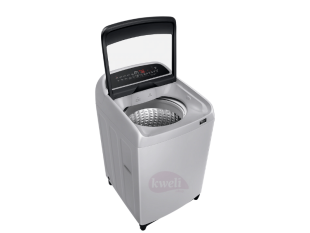
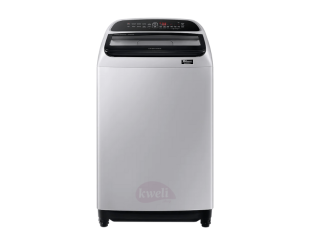
Add to basket Quick View FREE Delivery
Samsung 11kg Top Load Washing Machine WA11T5260BY – 700RPM, Magic Dispenser, Digital Inverter, Wobble Wash
UGX2,399,000
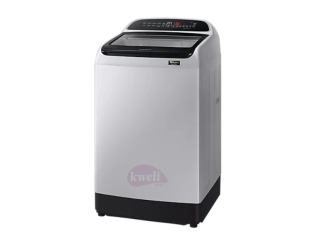

Add to basket Quick View FREE Delivery
Samsung 13kg Top Load Washing Machine WA13T5260BY – 700RPM, Magic Dispenser, Digital Inverter, Wobble Wash
UGX2,749,000
- Front-Loading Automatic Washing Machines
Front-loading washing machines have gained popularity in recent years due to their efficiency and performance. These machines have a horizontal drum design and load laundry through a door located on the front. Let’s delve into their pros and cons:
Pros:
- Energy efficiency: Front load washers are typically more energy-efficient than top load washers. They use less water and require less detergent.
- Water efficiency: Front load washers use less water compared to top load washers.
- Spinning: They typically have higher spin speeds, which remove more water from the clothes during the wash cycle, reducing the drying time.
- Cleaning performance: Front load washers are known for their superior cleaning performance.
- Gentle on clothes: The gentle tumbling action of front load washers is less harsh on clothes compared to the agitator found in top load washers.
- Larger drum space: Front load washers generally have a larger drum space letting you wash more clothes in a single load, saving you time and energy.
- Space-saving design: Front load washers are designed to be stacked with a matching dryer, which can help save space in smaller laundry rooms or apartments.
- Reduced tangling: Since front-load washers don’t have a central agitator, there is less chance of clothes getting tangled or twisted during the wash cycle. This is especially beneficial for delicate or easily tangled items, such as lingerie or sweaters.
- Quieter operation: Front load washers are generally quieter during operation compared to top load washers.
- Many functions: Many front-load washers come with a variety of wash cycles and customizable settings, allowing you to choose the right settings for different types of fabrics and levels of dirtiness. This flexibility helps optimize the washing process for different laundry needs.
Cons:
- Initial cost: Front load washers tend to have a higher upfront cost compared to top load washers.
- Installation and maintenance: Front load washers require specific installation procedures which typically require a technician.
- Bending and loading height: Unlike top load washers, front load washers require bending down to load and unload clothes. This can be inconvenient for individuals with mobility issues or back problems.
- Longer wash cycles: Front load washers often have longer wash cycles compared to top load washers. The additional time is typically due to the gentler washing action and water-efficient features.
- Water leakage and mould growth: If the door seal is not properly maintained and cleaned, front load washers can be susceptible to water leakage and mould or mildew growth.
- Odour issues: If the drum and seals are not adequately cleaned and dried after each use, front-load washers can develop unpleasant odours. This is caused by the accumulation of moisture and the growth of bacteria and mould.
- Potential for vibration and noise: If not properly balanced or installed on a stable surface, front load washers can vibrate during the spin cycle, leading to noise and potential movement. This can be mitigated by ensuring proper installation and levelling.
It’s worth noting that many of the disadvantages can be minimized or addressed with proper installation, regular maintenance, and following the manufacturer’s guidelines. While front-load washers may have some drawbacks, they continue to be a popular choice due to their energy efficiency, cleaning performance, and space-saving design.
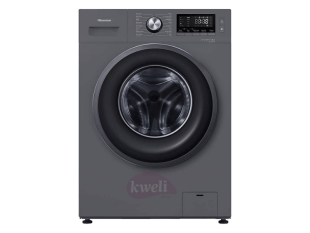
Add to basket Quick View FREE Delivery
Hisense 7kg Front Load Washing Machine A+++ – WFQP12EVMT
UGX1,390,000
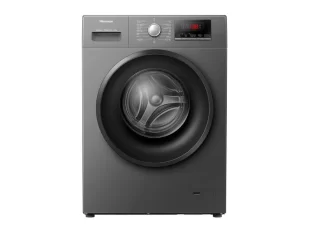
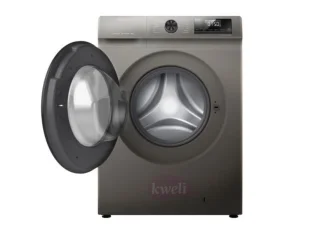
Add to basket Quick View FREE Delivery
Hisense 9kg Front Load Washing Machine WFQP-9014EVM; 1400 rpm, 1400 rpm, Pause and Add Items, Steam, 1800 watts
UGX1,690,000
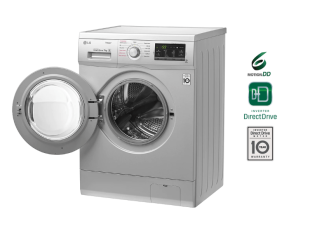
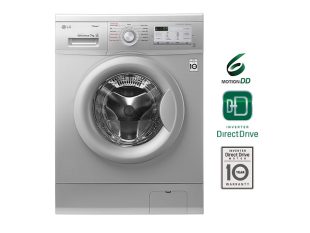
LG 7kg Front Load Washing Machine FH2J3QDNG5P; 1200 rpm, Steam Option, 6 Motion Inverter Direct Drive,
UGX2,389,000
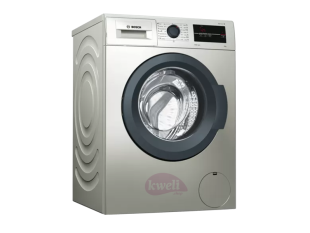
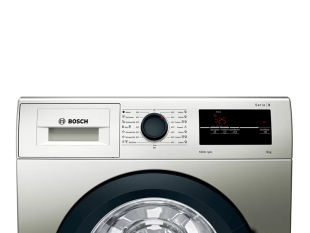
Add to basket Quick View FREE Delivery
BOSCH 8kg Front Load Washing Machine WAJ2018SKE; EcoSilence Drive™, ActiveWater Plus,1000rpm
UGX3,299,000
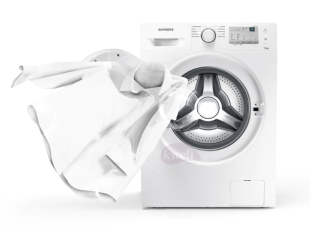
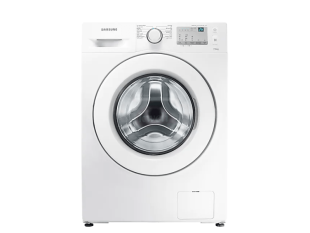
Add to basket Quick View FREE Delivery
Samsung 7kg Front Load Washing Machine WW70 J3283KW – White, 1200rpm, BabyCare, Diamond Drum
UGX2,049,000


Add to basket Quick View FREE Delivery
Hisense 8kg Front Load Washing Machine WFQP8014EVMT; 1400 rpm, Pause and Add Items, Steam, 1800 watts
UGX1,590,000

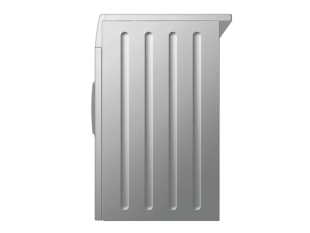
Add to basket Quick View FREE Delivery
BOSCH 6kg Front Load Washing Machine WAB2026SKE; Pre-Wash, ActiveWater Plus, Reload (Add Items), 1000rpm
UGX1,990,000
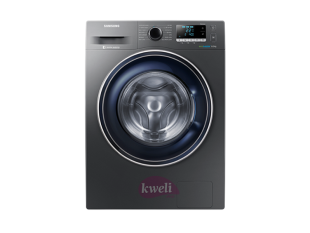
Add to basket Quick View FREE Delivery
Samsung 7kg Front Load Washing Machine WW70 T4020CX – Eco Bubble™, Hygiene Steam, 1200RPM
UGX2,599,000

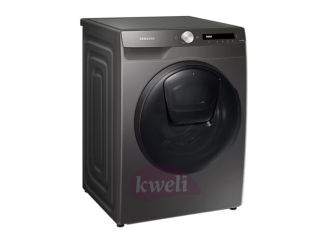
Add to basket Quick View FREE Delivery
Samsung 9/6kg Smart AI Washer Dryer WD90T554DBN | Eco Bubble™, 1400rpm, Steam, 9kg Washing Machine
UGX4,290,000

Add to basket Quick View FREE Delivery
LG 10.5kg Front Load Commercial Washing Machine FH069FD3FS
UGX12,900,000

Add to basket Quick View FREE Delivery
LG 20/12kg Front Load Washer Dryer F3L2CRV2T; +Miniwash, TurboWash™, TurboDry, 6 Motion Direct Drive, Steam™, Add Items
UGX8,259,000
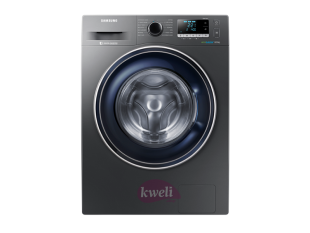
Add to basket Quick View FREE Delivery
Samsung 8kg Front Load Washing Machine WW80 T4020CX; 1200RPM, Prewash, Hygiene Steam
UGX2,949,000
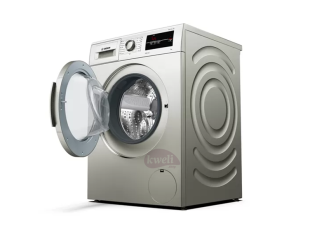
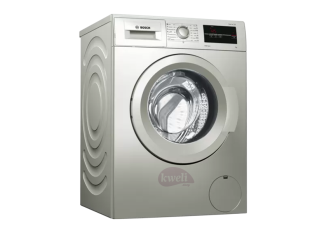
Add to basket Quick View FREE Delivery
BOSCH 7kg Front Load Washing Machine WAJ2017SKE; Pre-Wash, VarioDrum, ActiveWater Plus, Reload (Add Items), 1000rpm, Silver inox
UGX3,099,000

Add to basket Quick View FREE Delivery
Samsung 8kg Front Load Washing Machine WW80J5260GX – Eco Bubble™
UGX2,949,000
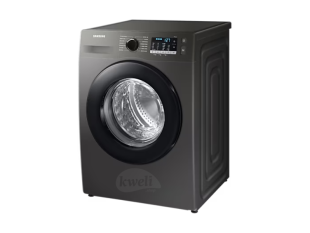
Add to basket Quick View FREE Delivery
Samsung 9kg Washing Machine with Steam – WW90 TA046AX; Ecobubble™ Washing Machine, 1400rpm, Hygiene Steam, 15min QuickWash
UGX3,249,000
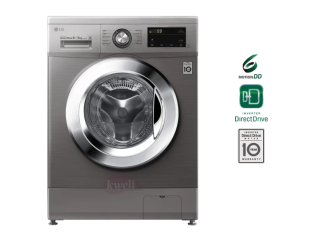

Add to basket Quick View FREE Delivery
LG 8/5kg Front Load Washer/Dryer F4J3TMG5P; 6-motion Direct Drive, 1200rpm, Baby Care, Quick Wash
UGX3,389,000
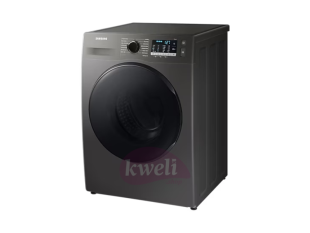
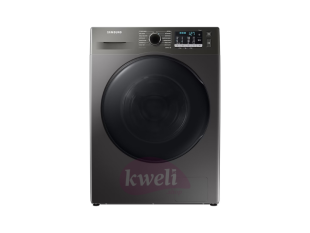
Add to basket Quick View FREE Delivery
Samsung 7/5kg Front Load Washer Dryer WD70TA046BX; Eco Bubble™, Steam, 7kg Washing Machine, 1400rpm
UGX3,390,000
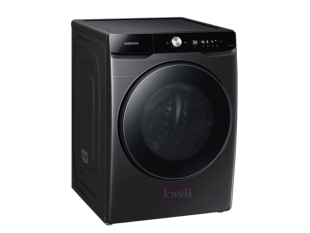

Add to basket Quick View FREE Delivery
Samsung 12/8kg Smart AI Washer Dryer WD12 T504DBN; Front Load Eco Bubble Washing Machine
UGX6,490,000


